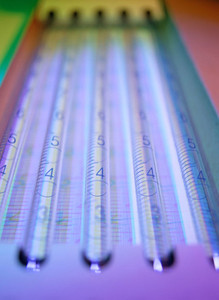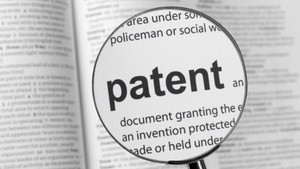The contentious issues of naming and interchangeability of biosimilars in the US have been raised once again, as a result of a survey carried out by the Alliance for Safe Biologic Medicines (ASBM). The survey, released on 13 September 2012, examined physician practices and perspectives with regard to identification and substitution of biosimilars. These remain issues that are as yet unresolved by FDA.
Naming and interchangeability of biosimilars raised in new survey
Biosimilars/General
|
Posted 05/10/2012
 0
Post your comment
0
Post your comment

The ASBM survey included results from 376 US prescribers, including endocrinologists, dermatologists, oncologists, rheumatologists, nephrologists and neurologists, all of which are specialties that prescribe biologicals.
Issues raised by the survey included:
Substitution
- Sixty-four per cent of surveyed physicians assume that if products have the same name a patient can be safely switched from one product to another during treatment.
- Seventy-six per cent view products with the same scientific name as structurally identical.
Naming
- The vast majority (99%) of physicians refer to biological medicines by name for both recording in charts and for reporting adverse events.
- Less than 1% of prescribers use national drug code numbers for records or reporting.
Switching
- Eighty-five per cent of responding physicians want the authority to designate a biological medicine as ‘Dispensed as Written’, just as they have it for chemical products.
- Eighty-six per cent of physicians want to be notified before a patient is switched to a biological other than the one prescribed even if there are no known concerns associated with the product.
The survey supports the views of advocates for unique naming for biosimilars, who have claimed that if a common non-proprietary name were used, patients would not know which drug they are getting [1].
Over 90% of the physicians surveyed had experience with biologicals and almost 80% responded as being familiar with biosimilars. This level of familiarity with biosimilars is a little hard to believe, as there is not yet a working pathway in place in the US to approve biosimilars.
The survey also revealed that, while most physicians referred to drugs by brand name (49%), 32% said ‘it depends’ for recording in charts. The main driver of this was ‘memorability’. Prescribers commonly record whichever name (brand or generic drug) was most familiar to them. Biosimilars perhaps have some work to do there in making their name ‘memorable’.
ASBM Chairman, Dr Richard Dolinar, commented on the survey results during the DIA/FDA Biosimilars Conference: Guidances, Science, and BsUFA, which was held in Washington DC, USA, on 6 September 2012. He advocated that ‘in order to avoid inappropriate substitution, all biologics should be required to have distinct names.’ He concluded by saying that ‘ASBM will continue to work to ensure patient safety remains the priority.’
Advocates for unique naming for biosimilars claimed that if a common non-proprietary name were used, patients would not know which drug they are getting and it would be difficult to attribute adverse events to a particular product. While advocates for a common name raised the possibility of overdosing or mis-dosing if different names were used, as a patient could inadvertently be prescribed two versions of the same biosimilar [1].
Suggestions have also been made for a prefix to be added to the labelling of biosimilars which are approved by FDA as interchangeable, making it easy to identify which medicines are safe for patients to switch between, and thus resolving the issue of ‘inappropriate substitution’.
Clearly, in order to enhance biosimilars use in the US, it is imperative that appropriate education is provided to physicians, the public and others, e.g. pharmacists, in order to help them better understand the safety and efficacy issues of biosimilars. FDA also needs to provide guidances relating to the issues surrounding naming and interchangeability.
Related articles
Amgen welcomes biosimilar monoclonal antibody guideline
European biosimilars market to reach almost US$4 by 2017
Reference
1. GaBI Online - Generics and Biosimilars Initiative. FDA’s public hearing on biosimilars guidance [www.gabionline.net]. Mol, Belgium: Pro Pharma Communications International; [cited 2012 Oct 5]. Available from: www.gabionline.net/Biosimilars/General/FDA-s-public-hearing-on-biosimilars-draft-guidances
Permission granted to reproduce for personal and educational use only. All other reproduction, copy or reprinting of all or part of any ‘Content’ found on this website is strictly prohibited without the prior consent of the publisher. Contact the publisher to obtain permission before redistributing.
Source: ASBM
Research
Reaching ESG goals in pharmaceutical development
What is the future for the US biosimilar interchangeability designation
News
FDA approves six denosumab biosimilars
EMA recommends approval for four biosimilars targeting three therapies
Most viewed articles
The best selling biotechnology drugs of 2008: the next biosimilars targets
Global biosimilars guideline development – EGA’s perspective
Related content
Samsung Bioepis wins Pyzchiva case; Regeneron patent rulings threaten foreign biosimilars
Chinese biosimilars go global: growth, partnerships, and challenges
Stelara biosimilars enter US market with 85% discount in 2025
IFPMA publishes position on pharmacy-mediated substitution for biosimilars
Samsung Bioepis wins Pyzchiva case; Regeneron patent rulings threaten foreign biosimilars

Biosimilars/General Posted 30/07/2025
Chinese biosimilars go global: growth, partnerships, and challenges

Biosimilars/General Posted 30/04/2025
IFPMA publishes position on pharmacy-mediated substitution for biosimilars

Biosimilars/General Posted 21/03/2025
The best selling biotechnology drugs of 2008: the next biosimilars targets







Post your comment